


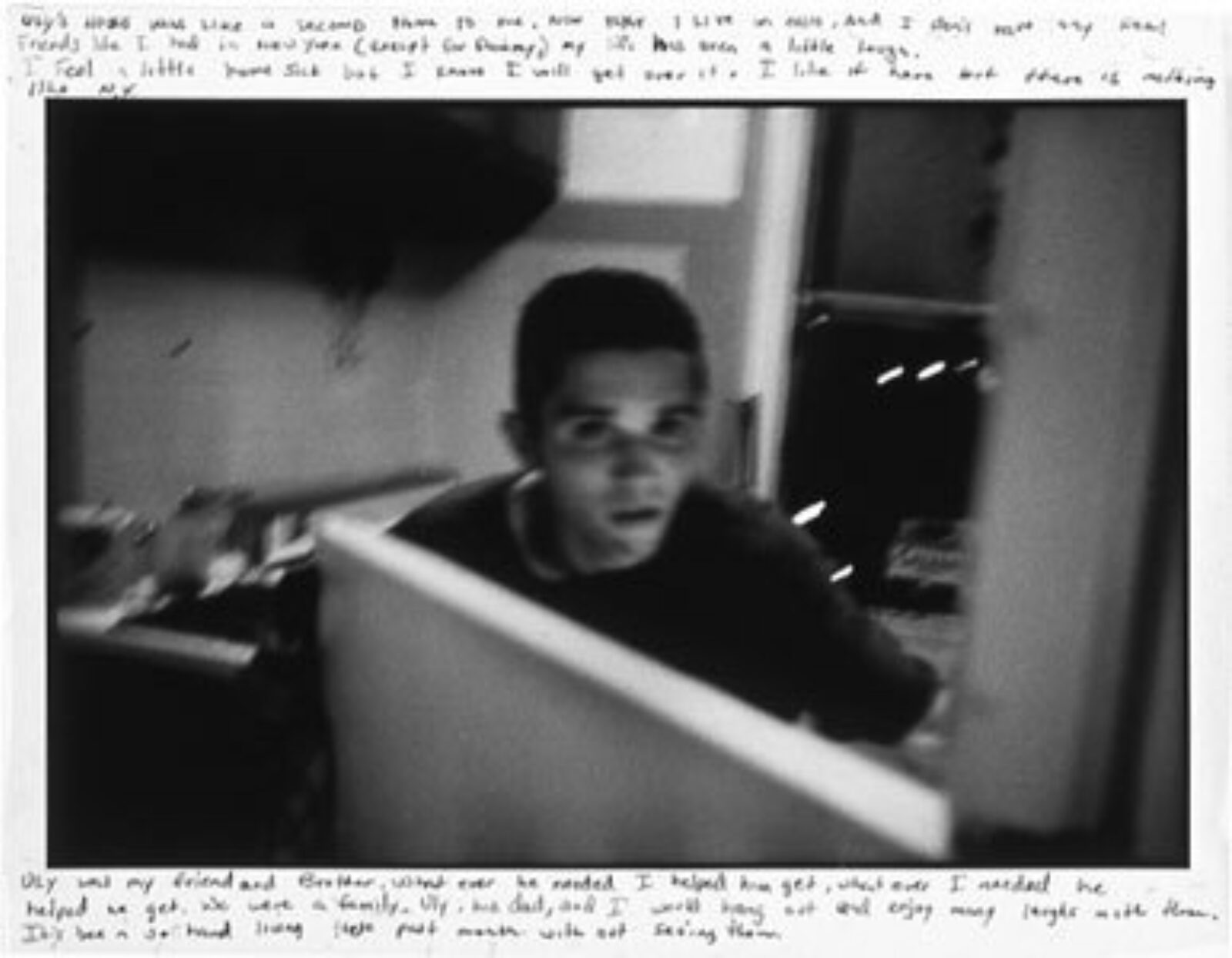
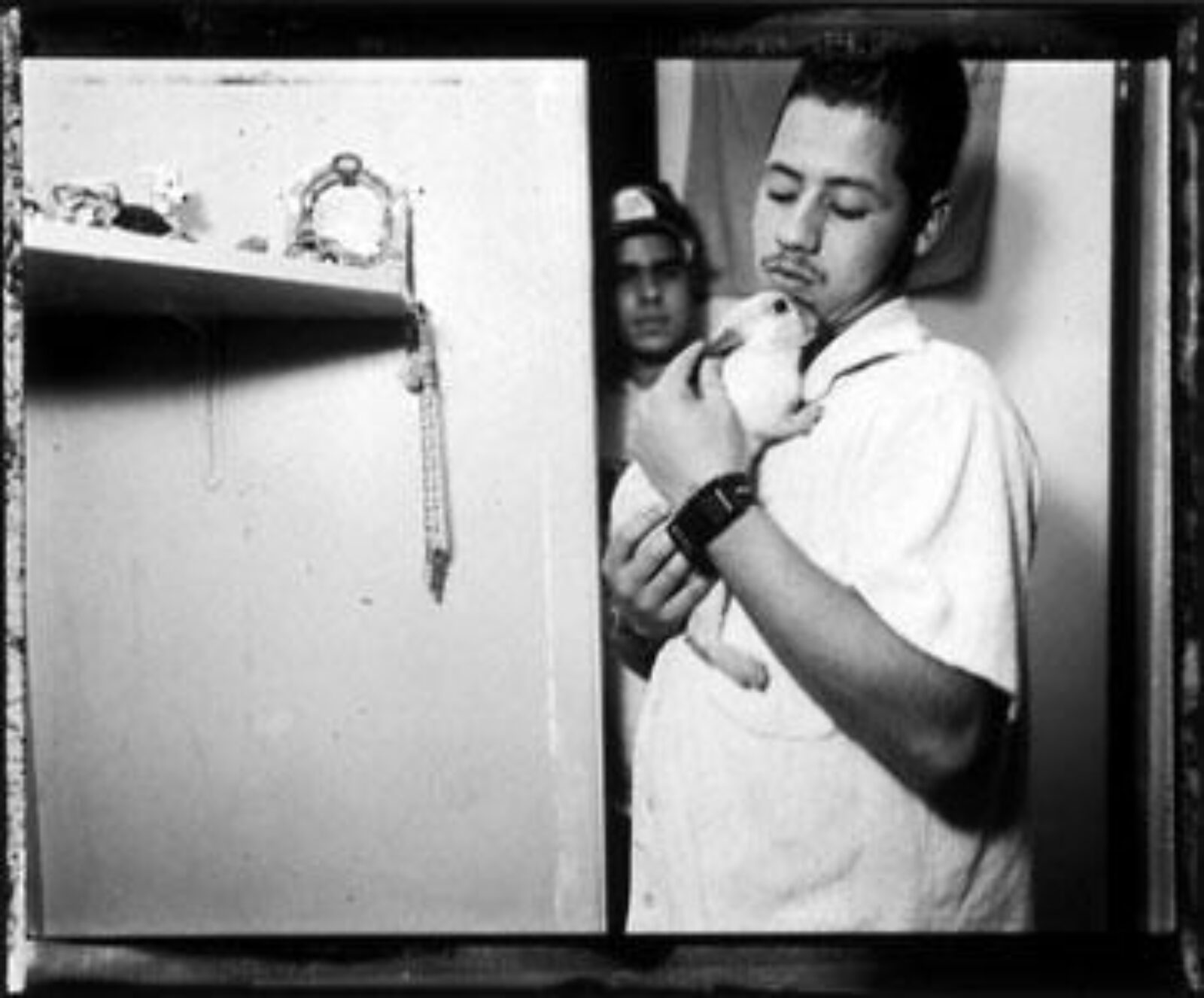
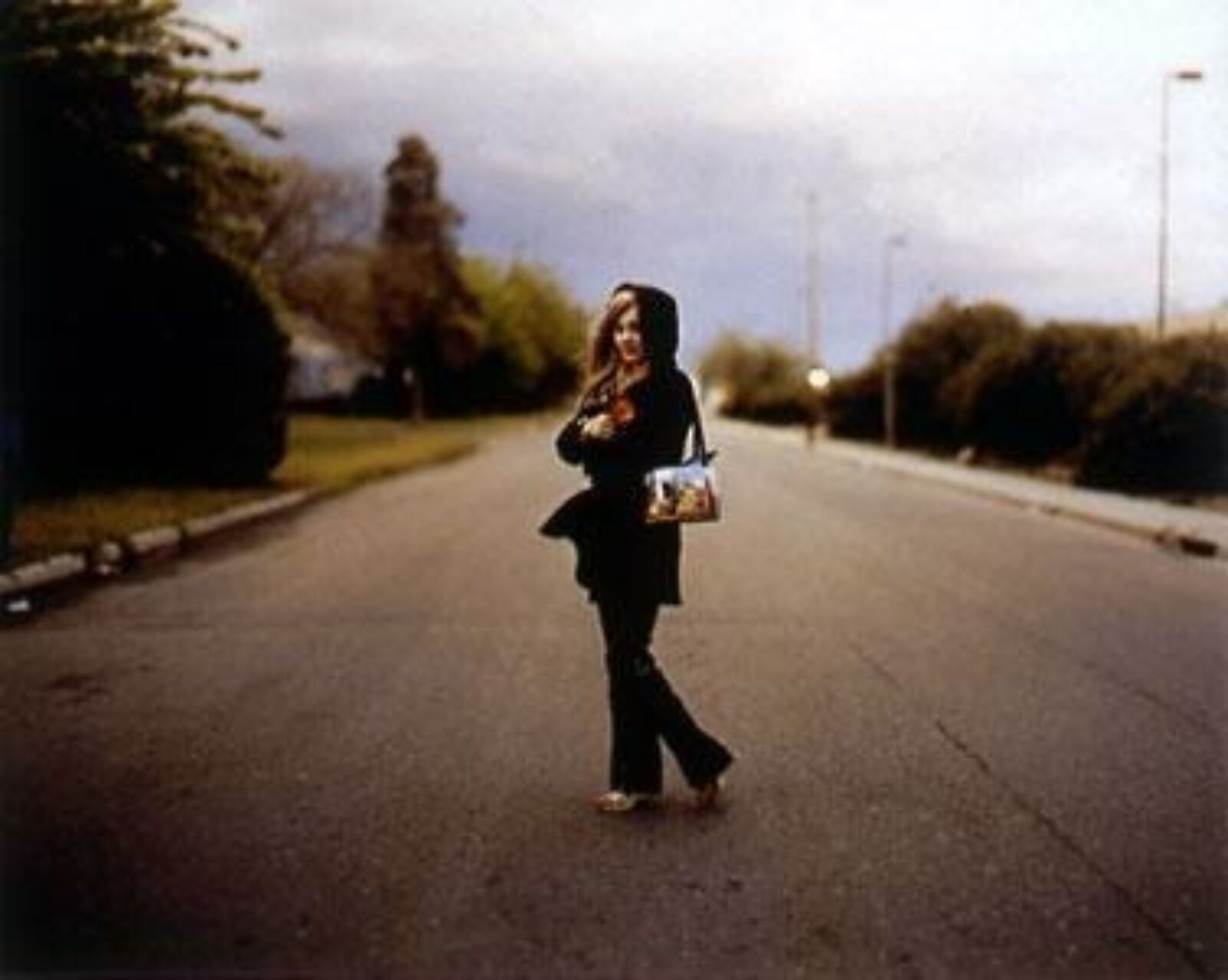
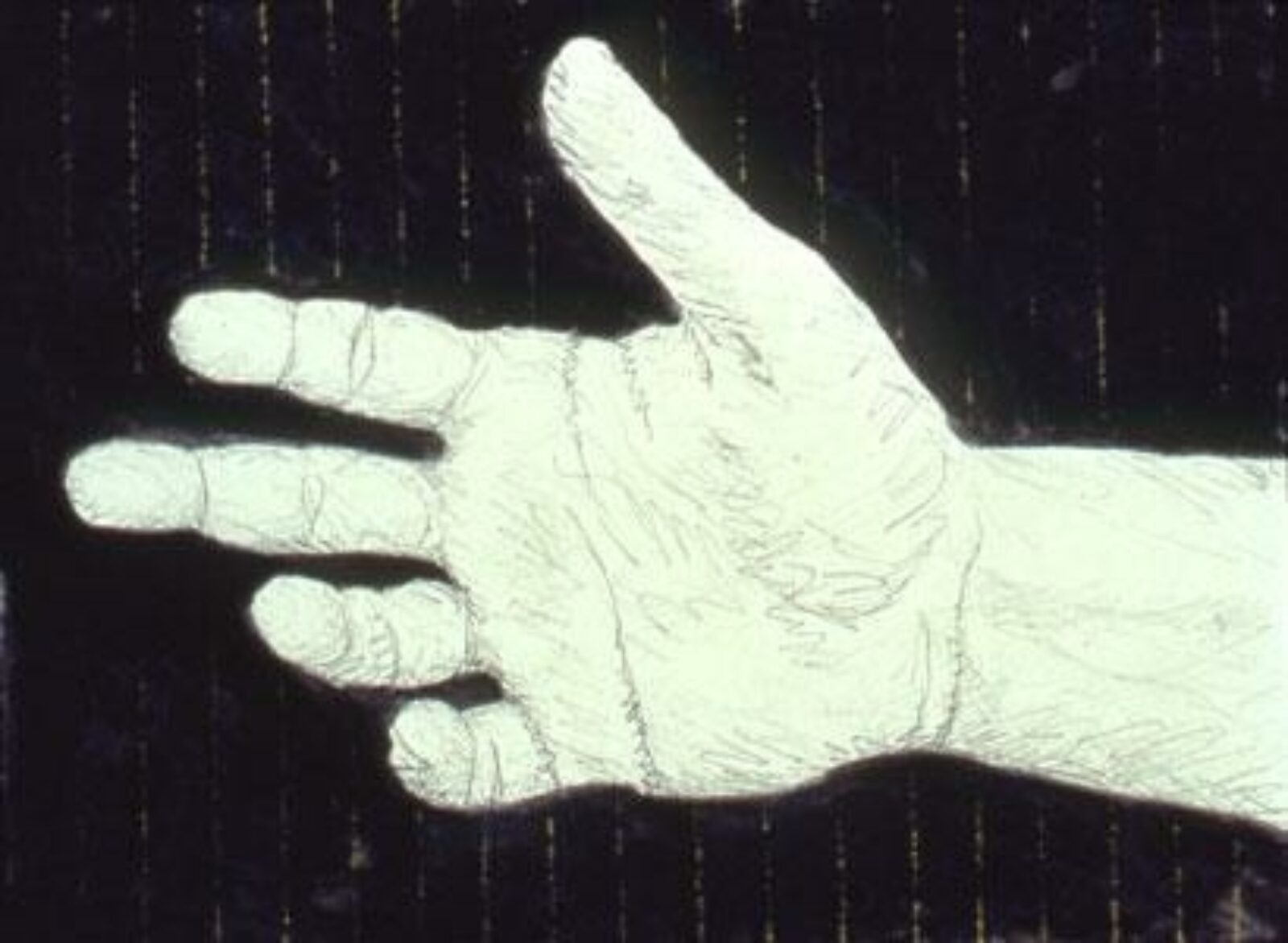
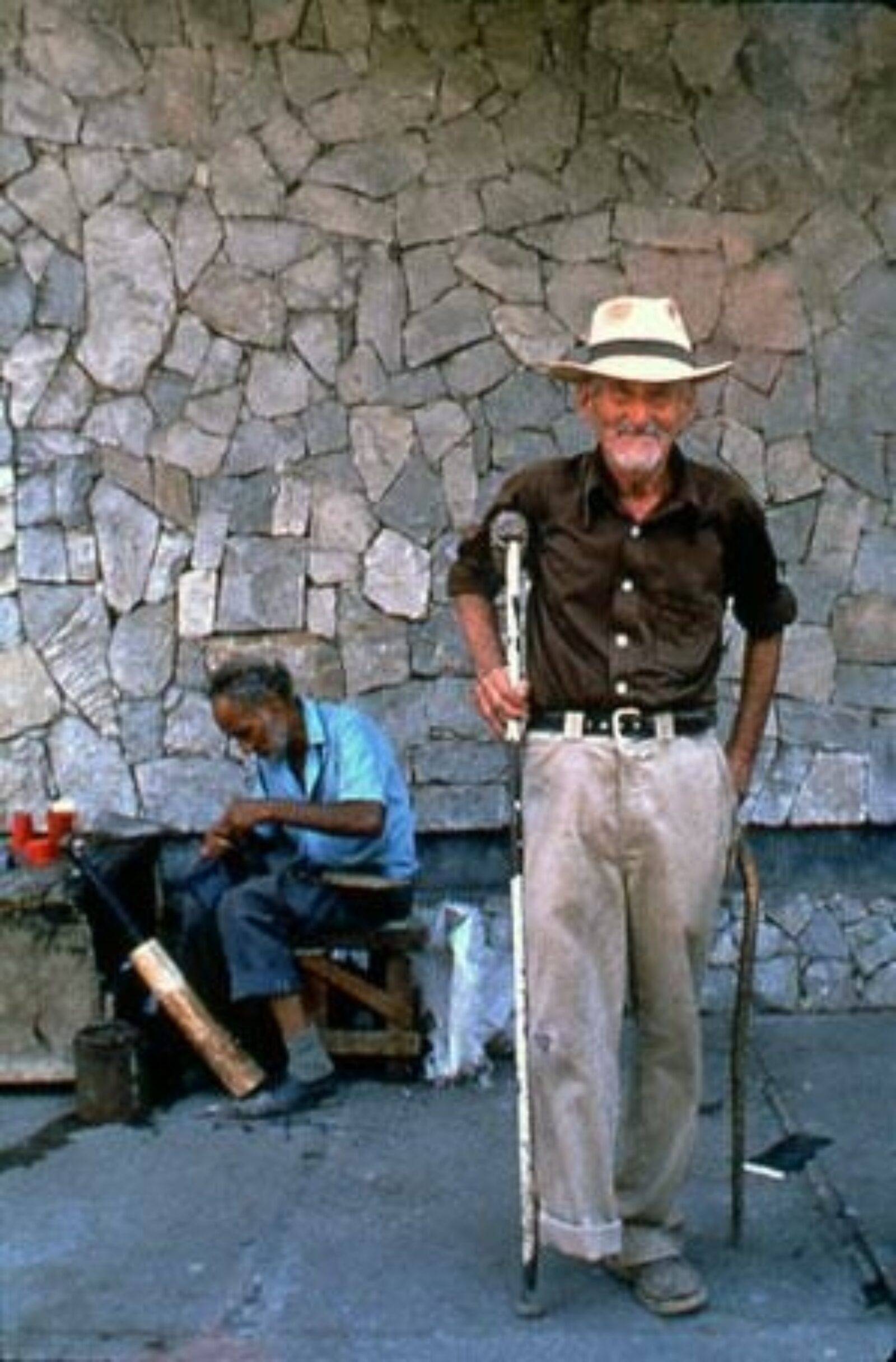




![Untitled [John S. and Jonathan]](https://storage.googleapis.com/visualaids-galleries/galleries/compassion-responsibility-and-independence/_fullWidth/emm-001-035.jpg)
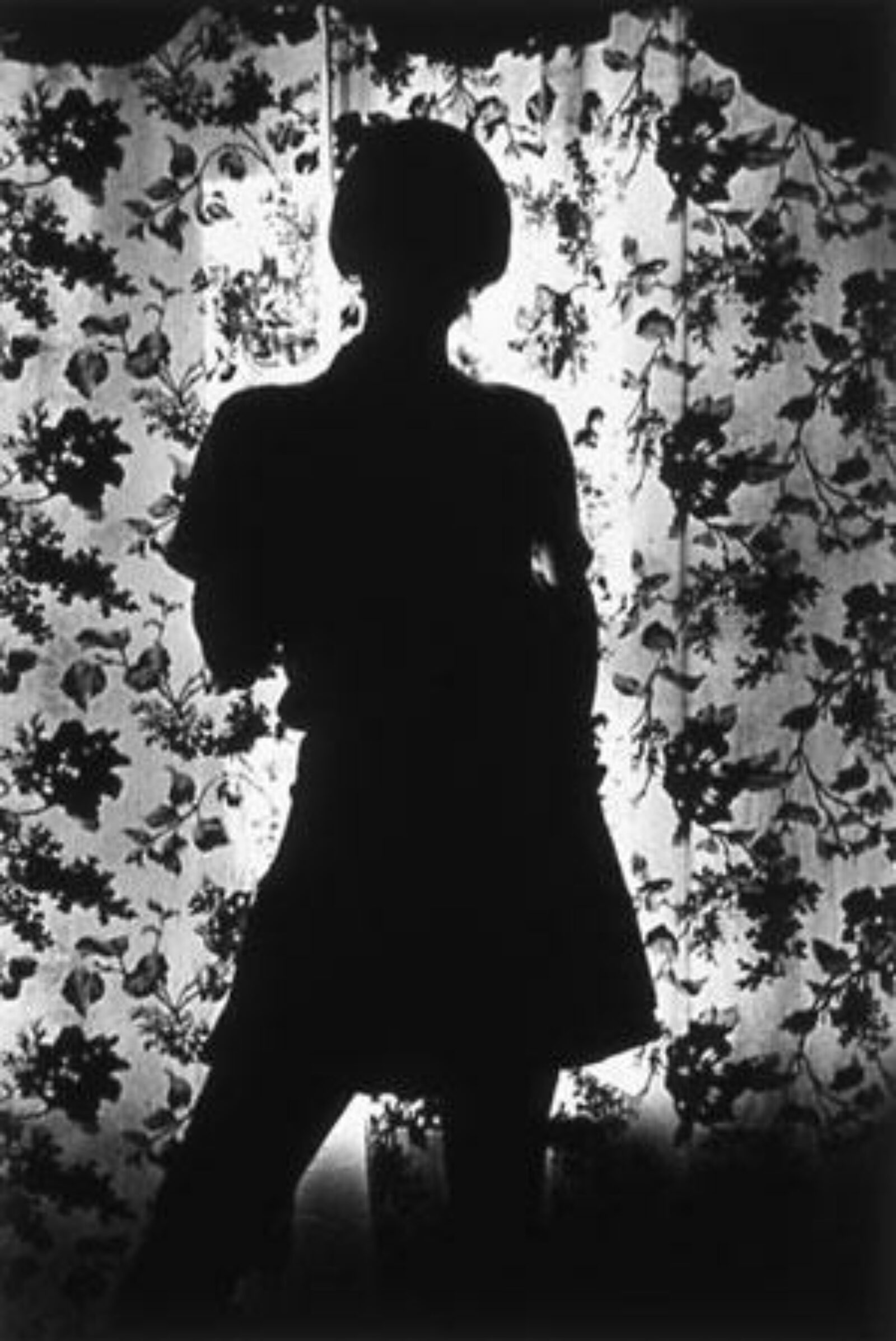


featured gallery for January 2006
Compassion, Responsibility and Independence
A Selection by the NYU Tisch Summer High School Photography Program
This month's web gallery was enthusiastically curated by a group of 16 teenage photographers. The students came from all over the United States to study photography and imaging at New York University's Tisch School of the Arts where they received college-level studio and critical studies instruction during an intensive one-month residency.
Utilizing the Frank Moore Archive Project at Visual AIDS, the students worked in small groups to collaboratively select work, with a focus on photo-based artists. Each group was asked to work together around the ideas of compassion, responsibility and independence. The students generated these concepts in their personal comments and writings about their own work and interests.
Working with the Archive Project was conscious raising on many levels for the students. They gained insight into curating as a career, how HIV/AIDS is transmitted and treated, and what an archive is. They experienced intimate access to a nonprofit arts organization, how to articulate thoughts and feelings in relation to images, and how to collaborate. I thank Visual AIDS for its generosity in providing this curatorial opportunity and thank Amy Sadao and Nelson Santos for taking the time to answer questions related to the archive, the organization, career paths, and personal experiences. I would also like to thank Nick Calcott, Tuka Bazin, Lauren Fabrizio, Katie Kline, and Ariel Goldberg, for their commitment as assistant teachers and mentors for the course. This opportunity is one that has and will continue to reveal new lessons learned at different stages in these 16 students' lives.
Matt McGrath, Linzi Silverman, Caitlin Stapleton, Victoria Young
As young people, we are constantly bombarded with AIDS information and its presence in our culture continues to grow. What we aren't told is that a positive HIV status, is not, necessarily, a death sentence. We chose these five works based on our own definitions of responsibility and independence, which we feel are central to the AIDS epidemic. We defined responsibility as being conscious of one's obligation to the well being of oneself and those in one's environment. To us, independence is autonomy and a right of passage we achieve in society as we move to adulthood.
Carlos Gutierrez-Solana's "Good Health." This image depicts a billboard with "Good Health Prevents AIDS" on it. We chose this image, because it reminds us of the way AIDS prevention information is marketed to young people, and brings back the ironic half-truths about the disease that we are taught at school. The advertisement reminds viewers that it is their responsibility to stay free of HIV/AIDS, but also perpetrates a common misconception that "good health," in any sense of the word, can protect someone from HIV/AIDS.
Brent Nicholson Earle's "Fair and Equitable?" Earle organized the American Run for AIDS, a 10,000-mile run around the United States, to raise money and awareness for fighting AIDS. The image we chose depicts young people taking a stand in raising AIDS awareness. This shows the independence of our generation in taking responsibility for fighting the AIDS epidemic.
Max Greenberg's "Bondage," depicting two hands tied together cupping what appear to be AIDS medication. Greenberg's work focuses on giving voice to those living with HIV, and casting light on aspects of their lives that are ignored. We chose this particular piece, because it reflects how HIV and AIDS can compromise one's independence and bind one to an intensive drug regimen.
Two works by Vincent Cianni from the same series: "Richie at Ulysis's House" and "Ulysis Holding his Pet Rabbit." The first shows a young boy who is alone in a new city and who has to learn to be independent. It appeals to us, because growing up and learning independence is something that we can relate to as young people. The second work explores the responsibility of caring for a pet, often purchased as a lesson by a parent for a child. In loving the animal, responsibility becomes necessary for the owner.
Visual AIDS provides an outlet for artists living with HIV/AIDS to give insight to the rest of the world on what it's really like to live with a potentially fatal disease. We chose these images from the catalogue because we feel that they best conveyed a sense of responsibility and independence on a level that appeals to young people.
Austin Garcia-Cooper, Lili Holzer-Glier, Brittany Jeffers, Lauren Leving
Independence. Generosity. Responsibility. Forgiveness.
We worked together to select images both personally moving and related to the above themes. As teenagers, these "themes" are sometimes oppressively present in our lives. This project however, helped make us aware of the importance of contemplating these ideas as long as we are living. We believe the following four images, as well as the artists who made them, relate to each theme as well as to the battle against HIV and AIDS.
After researching Nevin Robinson, our group decided his artwork fits quite well in the themed objective. He has been HIV positive for over eight years and uses photography to document the disease. He doesn't let his serostatus slow him down and his hard work shows in his photographs. Robinson works with Sunburst Projects, an organization for children and their family members who are living with HIV/AIDS. He has been volunteering his time to the program since 1997, working well with the children, and sometimes photographing them. The selected picture is of a little girl alone in a vast space. In Robinson's photograph, the girl is portrayed as independent. She is alone in the picture and, despite her young age, doesn't look afraid. She looks like she knows what she is doing in a familiar setting.
Few photographers have a gift for capturing the true essence of a certain habitat. Richard Renaldi utilizes this gift to its optimum effectiveness in "Fresno/Newark" (2003) and "LA Street" (2005). The works are not only portraits of people, but also comprise a photographic survey of the surrounding area(s), studying the physical and cultural environment. All of his subjects are presented in a similar manner, but each has a very different personality and story. "Christine," a part of his "Fresno" work, depicts a girl standing isolated from all else that surrounds her. Although the picture is subtle, she is alluding to her independent aura standing freely in the middle of the street, alone. Renaldi has also made a vast contribution in the fight against AIDS. Being HIV positive since 1996, Renaldi has devoted a sizable portion of his portfolio to recognizing people living with HIV/AIDS.
Steed Taylor's "Hand" responds to the theme of generosity. The artist's composition of an outward, extending hand exemplifies a wide range of day-to-day situations in which generosity can be displayed. Without the generosity of our counterparts, improvement cannot be made in the world, including advancements in HIV and AIDS research.
Joel Wateres' "The Optimist" provoked a mixed reaction within our group. The image is upsetting, but more importantly, it reminded us of the importance of compassion. It made us consider our responsibility, especially as teenagers, to help those in need.
Generally speaking, this project reminds teenagers to enjoy independence while maintaining some semblance of responsibility. In doing this project, we were reminded that the themes of independence, generosity, responsibility, and forgiveness will guide our actions for the rest of our lives.
Erica Tashiro, Lauren Haddad, Margaret Herre, Megumi Arai
With independence comes responsibility. We all dream of this "liberty," but as young adults we tend not to realize how many obligations come attached. Many of us learn it the hard way -- by making the wrong decision and facing consequences afterwards. The lifelong lessons involving independence and responsibility can be expressed in various ways -- even photographs.
Making choices is a big part of our everyday lives. Often we are faced with obstacles, the "good" or the "bad" decision. Ali is a brilliant photographer who does an excellent job in expressing a decision situation. His selected photograph shows a woman wearing a dark mask, while holding a white bird in her hand. We thought the contrast of objects within this image could represent making the right or wrong choice.
In Juan Rivera's photograph, Keith Haring is shown candidly hoisting a baby boy alongside him. Once the child was placed in Haring's hands, he surrendered independence and accepted responsibility. This abandonment of independence, welcoming a more meaty responsibility, was a conscious choice made when Haring opened his arms to the child. It is inspiring when one forsakes one's own independence to care for and be responsible for another. Rivera captured this wonderful moment beautifully.
"Independence" and "responsibility" change for those using wheelchairs. It takes an extra measure of will to break free from physical barriers to find independence. With a wheelchair comes a new "responsibility" not only for that individual, but also for those around him or her. There is no greater example of the need to push one's confines to acquire independence than being in a wheelchair, and few responsibilities more pertinent than taking care of someone in one. Albert Winn accurately captures this in his piece "Mom."
John Morrison's photograph of the performer with her legs covered in cash depicts the world of New York City that he lived in. At the young age of 19, Morrison left home for the big city where he quickly joined the club scene, living the life of fantasy and illusion. Photographing the crazy, chaotic scene, he perceived his existence in a different light. His evolution is a story of responsibility, and is represented in his work. This particular piece reminds us that as a performer, a person must be responsible enough to make decisions that will keep him or her safe. The photograph also illustrates money as it often represents independence and requires much responsibility. Once someone has a job in our society, they may be considered independent. Once that independence is granted, the responsibility of money management comes into the picture. With independence comes responsibility, and with the ability to be responsible comes the freedom of independence.
Kirstin Roby, Jessica Povenmire, Suzy Shaheen, Marissa Shulruff
This collection of five photographs expresses four teenage girls' definitions of responsibility and independence. Based on our growing experiences as teenagers, we chose these five photographs to express not only our personal opinions, but also how our generation has molded these words to fit the volatile world surrounding us.
The five photographs chosen represent independence and responsibility and how we experience them separately and how they intertwine with one another. Our strongest definition for responsibility was not only being liable for our own actions, but rather our responsibility for others. Our generation is experiencing times of war and unrest, and as citizens, we feel responsible for the actions of our family, friends, and country. The photographs of couples embracing by W. Benjamin Incerti and Mark Morrisroe illustrate our views of feeling responsible for each other.
Just as responsibility represents a communal feeling, we believe independence has a singular meaning of self-government and individuality. To show our feelings of strong autonomy, we chose portraits of individuals standing alone, such as the untitled self-portrait by Nelson Edwin Rodriguez. Though responsibility and independence have individual meanings, they influence each other simultaneously. As teenagers, our responsibility and independence is limited by our parents' roles in our lives. Our parents dictate how much independence we receive by how responsible we are. The photograph by John Lesnick illustrates our restricted freedom. The man in the photograph is celebrating his individuality through dance, yet he appears enclosed within bars, much like we experience our parents' constraints.
After researching Mark Morrisroe and reading about his past experiences, we understand more of why we were drawn to his work. Growing up, Morrisroe had a difficult family life. His mother was considered the "town prostitute" and by the time he was a teenager he had run away from home. He was forced to be independent and this is apparent in his art. Even though he was on his own at an early age, he still made it into art school, and surrounded himself with friends and made a better life for himself. Our selection represents individuality and responsibility and so do the artists and archive. Working with Visual AIDS portrays responsibility because every artist in the archive is HIV positive and is open about his or her status.
As young adults and as aspiring artists, we are learning more about our world and how to interact with it. Along with that new knowledge, we learn how to behave responsibly and independently each day. Photography is a powerful form and can be used in many ways. We feel this selection can portray our views of responsibility and independence in a strong and equally powerful way.
